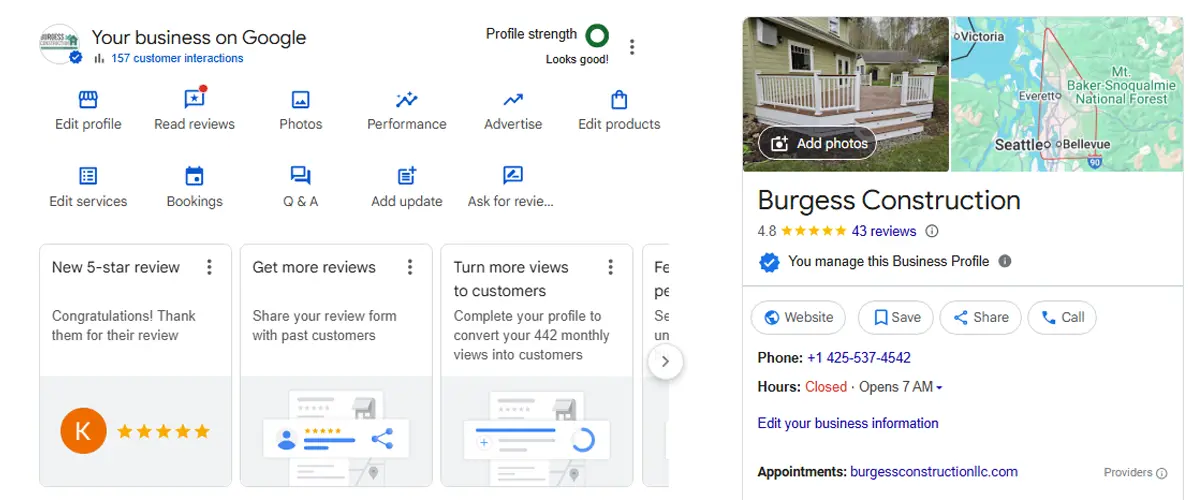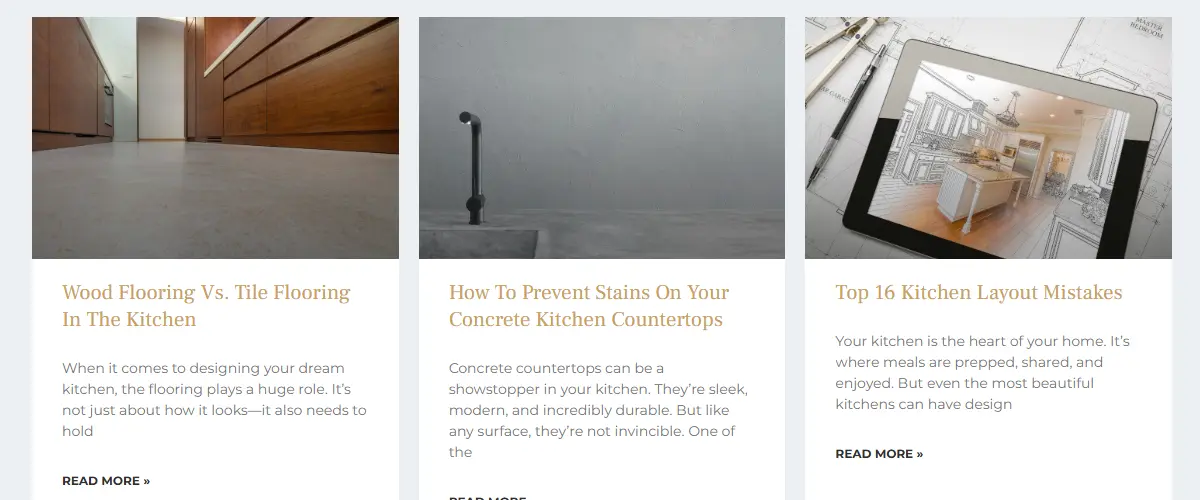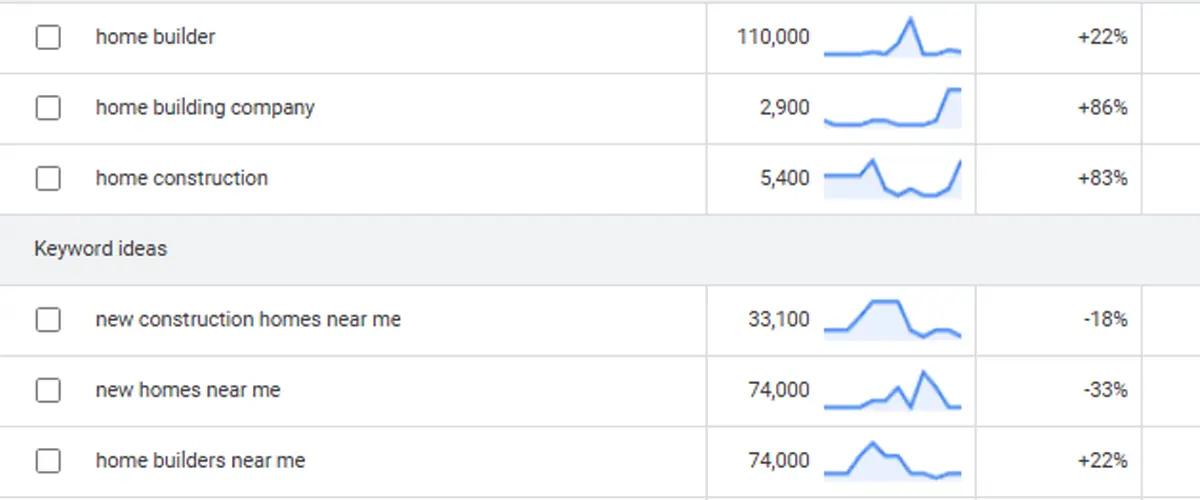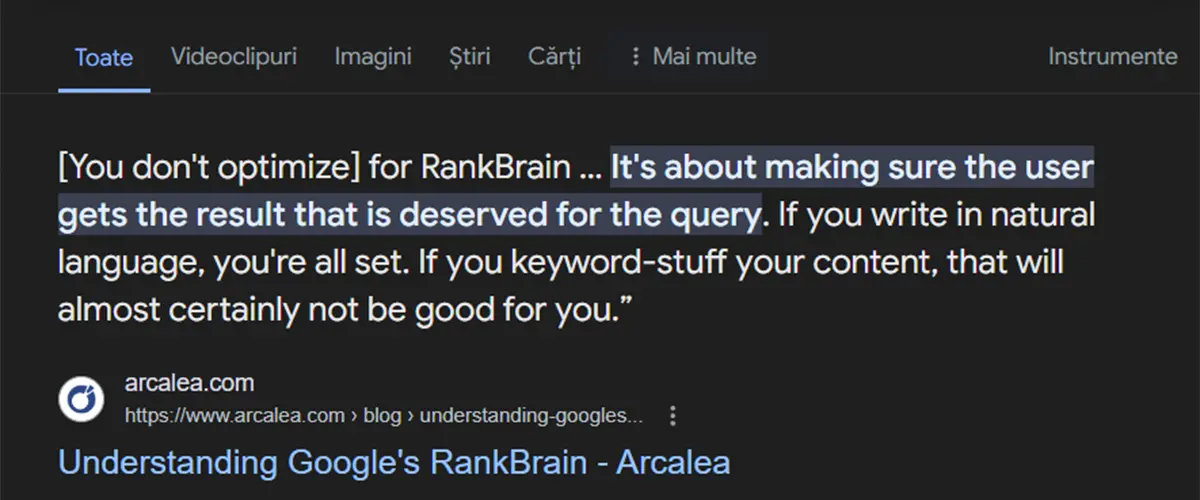Top 10 SEO Ranking Factors For Home Builders
Got a website for your home remodeling business and you’re not sure what to focus your efforts on to rank on Google and get leads online?
The SEO ranking factors for home builders have changed, and now people have to step up their game to succeed.
So these are the newest ranking factors for home builders’ websites in 2025.
Google Follows up to 10,000 Ranking signals
Last thing I want is to scare you off.
Sure, Google gets tons of signals from your website about things you’d think are irrelevant.
And realistically, they are.
You can’t build a website and keep in mind the 10,000 signals because you’d never finish.
This is why we’ll only focus on the top 10 ranking factors.
Top 10 SEO Ranking Factors For Home Builders
#1. Local SEO and Google Business Profile
Local SEO is the most important SEO ranking factor for home builders, and I’ll tell you why…
First of all, if you’re a home builder, you’re probably a local business needing local leads. That’s what local SEO is all about. It focuses on ranking locally more than nation-wide.
For local SEO, the most important ranking factors are:
- How relevant your business is to the search query
- How close your business is to the searcher
- How well-known your business is
You’ll also want a Google Business Profile, as that’ll become your main source of leads. To optimize it, you’ll want to:
- Use the right business category. In your case, home builder.
- Have a description that showcases your values and why people should work with you.
- Constantly upload project photos.
- Always ask for reviews from past clients, as these are an important ranking factor.
- Look into building citations on business directories for contractors.
Don’t have a Google Business Profile? Check out this article on how to build and optimize your GBP for the highest performance. If you want to learn more about business directories for contractors, check out this article.
#2. Useful, Easy Content
Because of all the useless, generic, impersonal AI content that’s popping up overnight, Google decided to prioritize helpful content first.
It needs to be original, in-depth, and to answer the question the user typed in the search bar.
If your website or blog post is just stuffed with keywords hoping it’ll rank, this is not how this works.
One of the main indicators that your content is helpful is to watch the average time spent on your page. A higher average means the users are actually reading and scrolling your page, and that’s great!
Make the users spend more time on your website by…
- Keeping your language simple enough so they can read easily
- Keep your sentences short so the page reads easier
- Provide practical, actionable advice, like we're doing now
- Give your users what they want. Your searched for 'seo ranking factors for home builders', I'm giving you the top 10.
#3. High-Quality, Relevant Backlinks
First of all, a backlink is when another website has a link that leads to your website.
The more of these you have, the better.
However, it is fairly to build quality backlinks if you’re not a well-established brand.
The best way to get quality and relevant backlinks is to have a very useful resource that people in your industry could use.
This could be a pricing calculator, a nice brochure, or a blog post with a ton of statistics from the construction industry.
#4. Experience, Expertise, Authoritativeness, Trustworthiness
This is a mix of things, but in short, it’s the EEAT. Let’s break down each letter.
- Experience is determined by the knowledge on the topic. If you're a home builder, then you have a lot of experience in construction and you'll get extra points for that. But if you have a construction website and decide to write a food recipe, good luck!
- Expertise is where you show Google that what you're writing is well-researched and factual. You do this by citing other experts, showing statistics and data, and linking to other businesses relevant to home building (like NHBA)
- Authoritativeness is a bit more difficult to approach because it doesn't depend on you. For this, you need other websites to link to yours and mention you online.
- Trustworthiness is dictated by how transparent you are on your website, with pricing, with reviews, and other information.
#5. Mobile-Friendly And User Experience
Over 80% of your website visitors come from mobile devices, so having a mobile-friendly website is a must!
Put simply, this means your website looks good and is functional on both desktop and mobile devices.
You also need to make sure the user experience (you, in this case) is great and you don’t have to struggle to read through the article.
This is good user experience.
This is bad user experience.
#6. Search Intent And Semantics SEO
Hopefully, your search intent has been fulfilled with this article. You were looking for SEO ranking factors for home builders, and I’m giving you the top 10.
The idea is simple…
If you type on Google ‘lots to build a house in Nebraska’ you don’t want to see apartments for sale in California. Or, if you look for SEO ranking factors, you don’t want to read about why doing social media is so difficult.
To match the search intent of users, you’ll want to use semantics SEO, which are other relevant keywords to what you were looking for.
For you, if you write a page about ‘best materials to build a home in 2025’, you’ll want to use keywords like James Hardie siding, ProVia windows, quartz tops, luxury vinyl flooring, framing, decks, etc.
#7. Page Experience and Core Web Vitals
This is a more technical part of SEO and ranking your website. Nevertheless, it is a very important one so we must discuss it anyway.
The page experience and web vitals represents the health of your website.
This dictates how fast your website loads, it measures how users interact with your page, and it shows other errors that might occur.
There are three main things to optimize here.
- Largest Contentful Paint (LCP) shows how fast your main content loads. Ideally, this must be super fast so users don't get timed out.
- First Input Delay (FID) to Interaction to Next Paint (INP) measures user interactivity. The more clicks, scrolls, or typing a user does, the better.
- Cumulative Layout Shifts (CLS) is what prevents page elements to shift and move unexpectedly. E.g. when a button moves outside of the screen.
Want to test these? Go on any platform that checks your site’s speed (like Page Insights, GT Metrix, Pingdom, etc.), type in your website, and see what’s going on. As always, green is good, red is bad.
#8. AI & Machine Learning
This is a fairly new ranking factor that’s increasingly more important.
For starters, Google has been using AI to rank pages based on these ranking factors for a long time. But now, these algorithms and AIs have become a lot more powerful and smart, so you can’t trick them like you used to.
E.g. back in the day, if you packed your page with keywords, you were guaranteed to rank on Google. Now, they delete that page from Google.
RankBrain and Google’s Gemini are already returning AI-driven personalized search results, which means users will get different results depending on how they trained their AI.
#9. Structured Data & Rich Snippets
-This is a more technical thing you can do, but it’s clearly something that pays off.
Schema Markups improve how Google understands and displays your content because you’re giving it hints and instructions.
These schemas will also help you create featured snippets on Google, knowledge panels, and FAQ-rich results.
#10. Secure and Accessible Website
With newer website, this is very rarely a problem, as almost always they have HTTPS encryption.
But if you have an older website built by a friend of a friend, you’ll want to make sure your website has that HTTPS in the link. Otherwise, many users might be blocked from entering your site and you could be losing potential clients.
To make your website accessible to all users, including those with disabilities, you need to work with a developer.







